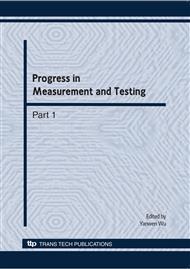p.476
p.482
p.488
p.494
p.500
p.507
p.513
p.519
p.525
Fast Computing Scheme for AGV Obstacle Distance Measure and Road Recognition
Abstract:
Automatic obstacle avoidance and road detection for the Automation Guiding Vehicle (AGV) need to calculate the distance, object shape parameter. This paper presents a new obstacle distance calculating method based on monocular vision. Through scene in the two different images corresponding feature points are accurately matched, according two different video frame images disparity to compute distance between AGV and obstacle. In order to accurately find feature points, this paper uses a detection algorithm based on Harris corner, combines epipolar constraint and disparity gradient for image matching. These steps accelerate measure computing results. The basis of known structural characteristics of the road presents a road image morphology algorithm to filter road image noise, combines fast threshold algorithm to achieve a set of structured road recognition guiding system. Experimental results show that the detection method can correctly recognize the structured road of interference with certain obstacle, and achieve a visual robot guiding system.
Info:
Periodical:
Pages:
500-506
Citation:
Online since:
May 2010
Authors:
Keywords:
Price:
Сopyright:
© 2010 Trans Tech Publications Ltd. All Rights Reserved
Share:
Citation:


